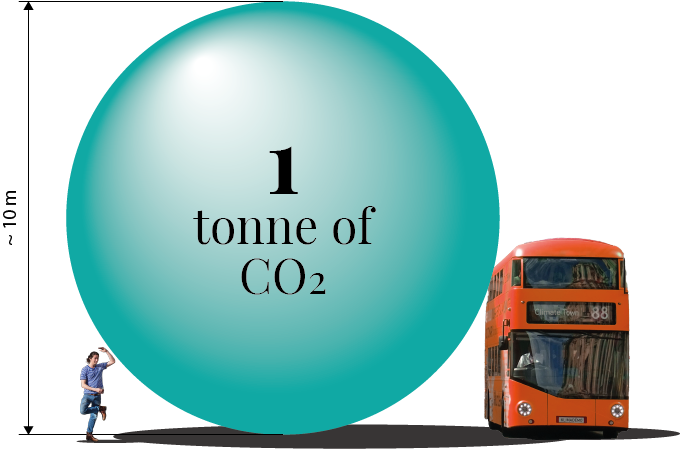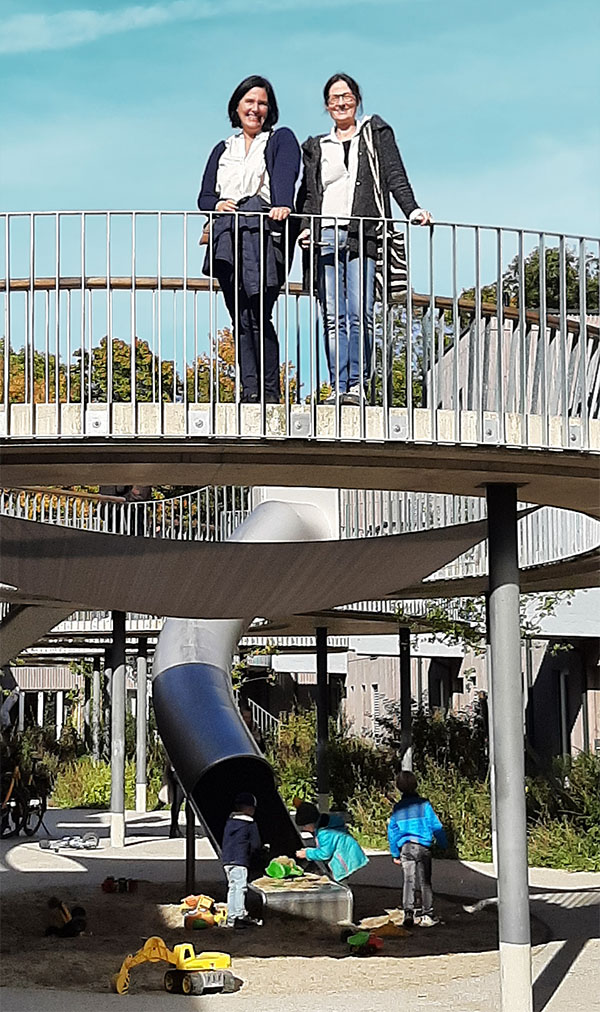Numbers and their meaning
How much carbon dioxide does Vis-à-Vis produce?
What is a tonne of CO₂? Is it much, little, big, small? I really have no idea. Somehow in this research project we will try to get an idea about relative amounts by comparing alternatives and expressing everything in tonnes (=metric tons) of CO₂. What construction alternative produces less CO₂ when building it? How does the initial CO₂ burden compare to what can be done in the next phase, when we use the building? How much CO₂ reduction can we actually afford?

What is a tonne of CO₂? Picture: Vis-à-Wien, carbonquilt
Because for sure all measures have a price tag and who will pay for that; me, our great-grandchildren, some government subsidy? That money issue is what always overshadows everything else. As one of the members of our group put it: I try to be careful with the environment: I don’t have a car and use the washing machine sparsely. Common sense tells me what in the choices for the new building is good or not. The big question though, is if I can afford it!

Cristina Florit (left) & Muñoz-Czerny at the Klimademo Vis-à-Wien excursion to Germany. Photo: Marieke (Vis-à-Wien)
During architecture study at some point there was a class where you had to calculate what the price of things was. This was not a popular class to say the least of it. We all had high ideals about being an architect. Muddling along with such mundane matters as money, certainly did not fit that image. Counting money was sort of below us. Now I know better: in the real world, everything is always about money. No matter how brilliant the design, in the end it is the financial feasibility that determines if it gets built or not.
Cristina works for IBO, the Austrian Institute for Building and Ecology. In this project she and her colleague Ute Muñoz-Czerny make the life cycle assessments that allow us to compare different alternatives. Their research will describe the environmental impact of the alternatives in simple graphs. These use a scale in tonnes of CO2 emission (or storage when the numbers are negative).
Maybe as a group we should think of ways to translate that further into something like investment per square meter, or percentage of the rent, to get an idea of the costs and benefits.



